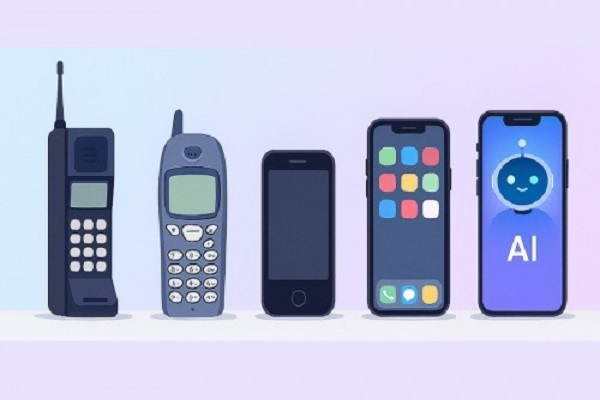The Evolution of Smartphones: From Basic Phones to AI Companions

The journey of smartphones has been remarkable. From simple devices used just for calling and texting, today’s smartphones are powerful AI companions that manage our daily lives, entertainment, work, and personal health. Let’s explore how smartphones have evolved over the years.
1. The Era of Basic Phones
In the 1990s and early 2000s, mobile phones were simple devices focused on voice calls and SMS texting. Devices like the Nokia 3310 became iconic for their durability, long battery life, and straightforward functionality. There were no cameras, apps, or internet connectivity – just reliable communication tools.
2. Introduction of Feature Phones
By the mid-2000s, phones began to include extra features like cameras, MP3 players, and basic web browsing. Phones like Sony Ericsson Walkman series and Nokia N-series allowed users to listen to music, take simple photos, and access mobile internet. These feature phones were the bridge between basic phones and the modern smartphone.
3. The Rise of Smartphones
The launch of Apple’s iPhone in 2007 changed everything. Smartphones became pocket-sized computers with touchscreens, internet connectivity, and an app ecosystem. Android devices quickly followed, offering a range of affordable and high-end options. Key features like high-resolution cameras, GPS, and multimedia capabilities became standard.
4. Mobile Apps and Ecosystem Expansion
Smartphones evolved into platforms for apps. From social media and productivity apps to mobile banking and e-commerce, apps transformed how we communicate, shop, and work. The smartphone ecosystem became central to daily life, replacing many standalone devices like MP3 players, GPS devices, and point-and-shoot cameras.
5. AI and Smart Assistants
Today, smartphones are AI companions. Features like voice assistants (Siri, Google Assistant, Alexa), AI-powered cameras, and predictive text have made phones smarter and more intuitive. Smartphones can manage calendars, suggest routes, analyze health data, and even anticipate user needs. AI integration has blurred the line between devices and personal assistants.
6. The Future of Smartphones
The evolution continues with innovations like foldable displays, augmented reality (AR), and AI-driven personalization. Smartphones are moving toward becoming seamless extensions of our daily lives, capable of handling complex tasks with minimal input.
Conclusion
From basic phones to AI-powered companions, the smartphone has transformed communication, entertainment, work, and personal life. These devices are no longer just tools—they are intelligent partners that shape how we live, work, and interact with the world.
























